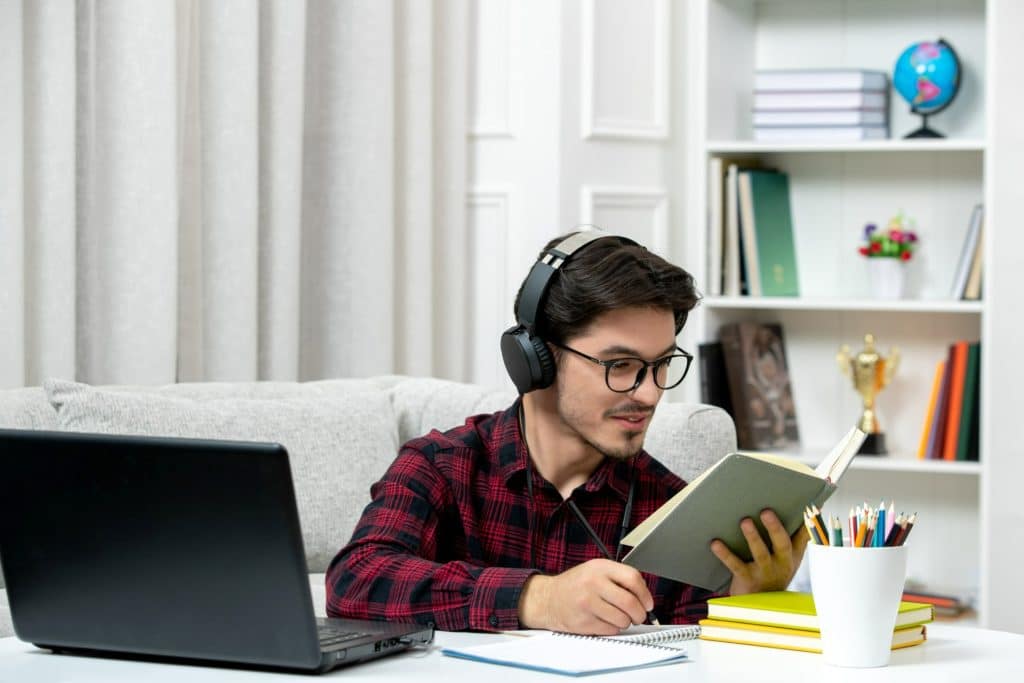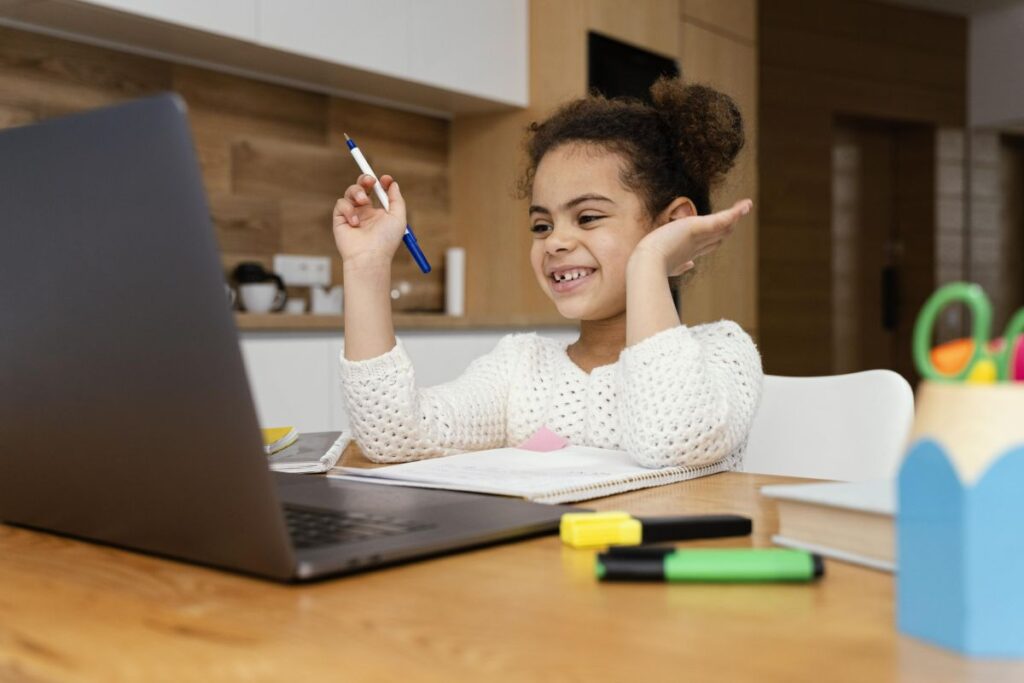Blended learning is constantly gaining prominence in the education industry. It is a popular approach with a combination of offline and online learning. For students, it is an empowering choice that expands the scope of high-quality learning without too many restrictions. At the same time, a blended classroom reduces human effort, thereby reducing the human effort of stakeholders.
Let’s understand the meaning of blended learning in detail. And explore how it improves the educational experiences.
What Is Blended Learning?
Simply put, blended learning is an approach combining traditional (face-to-face) learning with online learning. It supports students and stakeholders with numerous benefits of virtual learning simultaneously with the traditional learning approaches.
Now that we know what is blended learning, let’s understand the history of this term.
Background of Blended Classroom Learning
The origin of blended teaching and learning dates back to the year 1999, when this term was used during a press release in Atlanta. Back then, this term was largely understood as any combination of technology and pedagogy. This broad meaning of blended learning was later reanalyzed. And this time, it was concluded that blended teaching and learning has a range of digital and classroom forms that can be used to enhance educational experiences.
Up next, are the types of blended learning models.
Common Types of Blended Learning Models
1. Flex Model
Students who look for occasional teacher support along with flexible study choices use the ‘Flex’ model. This transfers a large fraction of the instructions to the virtual mode. And yet allows students to connect with the teacher for support/solutions to any of their problems.
2. A La Carte Model
A la carte model truly lives up to the meaning of blended learning as it expands educational choices beyond the regular classrooms. Students can add their preferred virtual course along with the traditional classroom learning. This widens their option for supplementary learning. And they can enhance their knowledge over and above the regular classroom subjects/courses/learning.
3. Enriched Virtual Model
Similar to an online school, this model has the feasibility of virtual classes to develop collaboration skills with group work, and allows active participation in activities.
In most cases, these classes have a defined schedule. This model is great to support interpersonal connections between students. And it also makes it possible for them to look for the right guidance during their self-study duration.
4. Rotation Model
Rotation model has features like individual virtual classes, small group instructions, and offline assignments, etc. Techers can plan their classes as per their pre-defined schedules. In addition, they can also decide to plan these as and when they feel the need of doing so.
5. Face-to-Face Driver Model
Combining traditional classroom instructions and supplementing it with online tools, makes the Face-to-face driver model quite effective for individualized student support. In blended teaching and learning this model helps in bridging learning gaps once again without requiring too much human effort.
6. Flipped Classroom Model
One of the most popular and effective blended learning models is the ‘Flipped classroom’. In this model, teachers guide students with a particular topic/lesson, etc. And allows them to acquire knowledge of the same independently (with self-study/research). Later, more classroom activities, student presentations, sessions, and discussions are planned to make the learning more holistic.
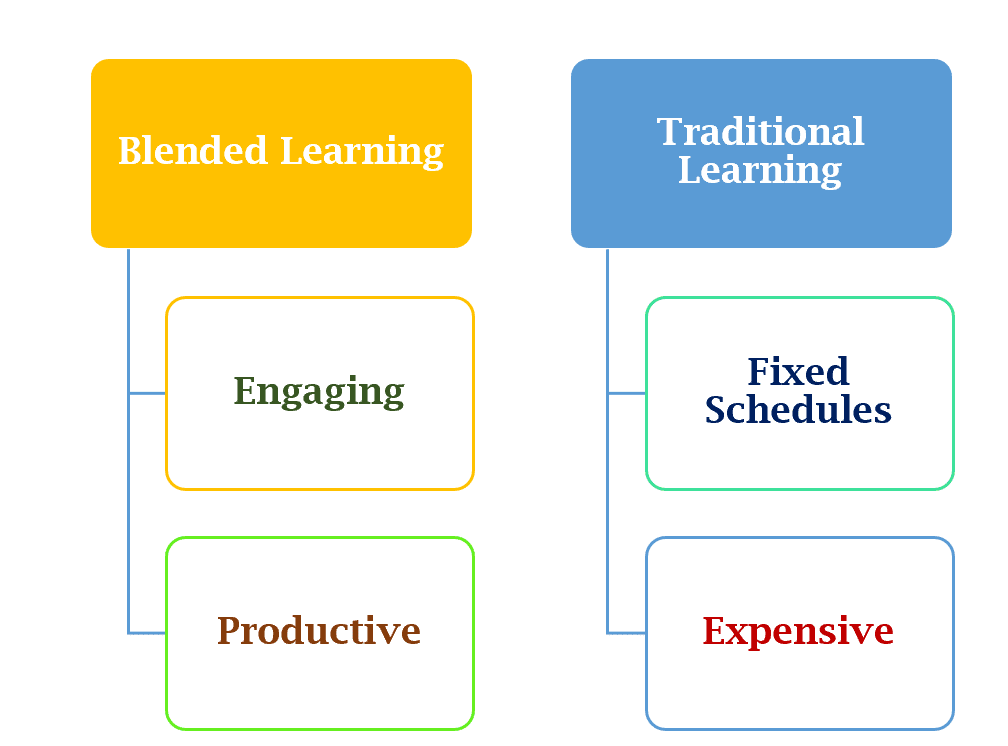
Let’s jump to the benefits of blended learning now.
Prominent Advantages of Blended Learning
Tailored Learning-
A blended curriculum is a powerful choice that can customize the entire learning experience of a student. Digital technologies perfectly adapt instructions to the student’s liking, and learning levels. All this helps to make the experience more tailored without too much human effort.
Effective Support-
A blended curriculum revolves around the learning needs of students. And clearly demarcates the role of teachers. Blended teaching and learning allow teachers to facilitate the student’s learning, where the former guides the latter with activities, discussions, project-work etc.
This way, students get the necessary support/handholding. At the same time, this model also empowers students with enough freedom to engage with concepts on their own.
Typically, this choice helps students to learn in the classroom. And they can strengthen their understanding at their own pace with virtual resources during the self-study duration.
Equipping Students with Skills-
In this digital world, skills matter more than degrees/credentials. And again, blended learning suffices the real purpose of education by helping students develop digital literacy, thinking abilities, along with other 21st-century skills (like communication and collaboration, etc.).
Deeper Learning-
With more time in hand and the freedom to choose their own pace, students learn better in a blended classroom. They can try applying concepts during the self-study duration. And remember these for a longer time with a deep understanding of the concept/content.
Like many other educational approaches, blended learning also has some challenges. Here’s a look at some of these.
What are the Common Pitfalls/Challenges in Blended Learning?
Design and Delivery
Designing a blended learning experience is a crucial step to ensure a successful implementation of the program/course. This endeavor needs careful planning, and a strategic approach to meet the needs of the target group.
Weak Tech Skills
Being unfamiliar with technology deprives teachers and stakeholders of the benefits of a blended classroom. Weak tech skills also hold many students and stakeholders back. And they often prefer staying away from new technologies/digital resources.
During the pandemic, almost 31% of teachers felt they were not proficient with digital tools. Some more issues are mentioned as under.
| Issues with teachers | % |
| Not proficient in digital tools | 31% |
| Still undergoing training | 79% |
| Can conduct online assessments | 50.41% |
| Feel uncomfortable with digital integration | 44.63% |
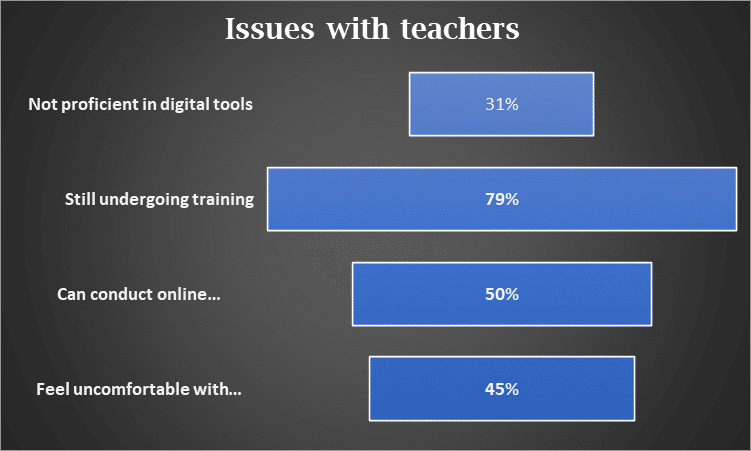
Similarly, by 2024, only 28.6% of Indian youth (between 15 and 29 age groups) had internet browsing skills (sending e-mails, and conducting online transactions, etc.).
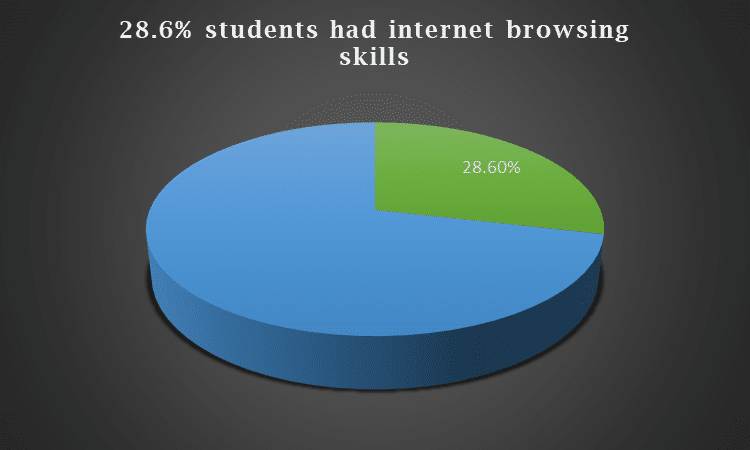
Motivation Issues
Similar to online learning, a blended classroom also needs motivation to carry out academic tasks and indulge in studies religiously. Hence, students with self-discipline issues can easily fall behind or struggle with blended classroom learning.
The Bottom Line
Blended learning is a thoughtful approach with wider choices of educational materials and resources. However, this student-centric approach needs strong planning skills to serve its real purpose.
Thanks for Reading!
Frequently Asked Questions
- What is the meaning of blended learning?
Blended learning combines regular face-to-face learning with online education (elements and resources, etc.). This gives students more choices to carry out academic tasks conveniently. And reduces struggles with more pacing options. - What are the benefits of blended classroom learning?
In a blended classroom students can enjoy the benefits of online learning along with the traditional learning approaches. This reduces the chances of missing classes. And students learn well by using online tools during their self-study duration.
Must Read
- Train Your Brain: How to Stay Focused While Studying?
- Become a Topper: Tips to Study Smartly for Exams
- Mindfulness: Techniques to Deal with Exam Stress and Anxiety
- Importance of Library for Students in the Knowledge Age
- Benefits of Reading Books: Why Everyone Should Read More
- Unlocking Potential: A Guide to Reading Skills & How to Build Them in Children (2024)
- Top 10 Best States for Education in India: Facts and More
- Why Reading Is Important for Children?
- How to Revise: 10 Tried and Tested Revision Techniques (With Pro Tip)
- What is The Importance of Math & Why Does It Matter in The Real World?
- Importance of English Language: A Passport to Success
- Best Hobbies for Students to Boost Their Mental Health

